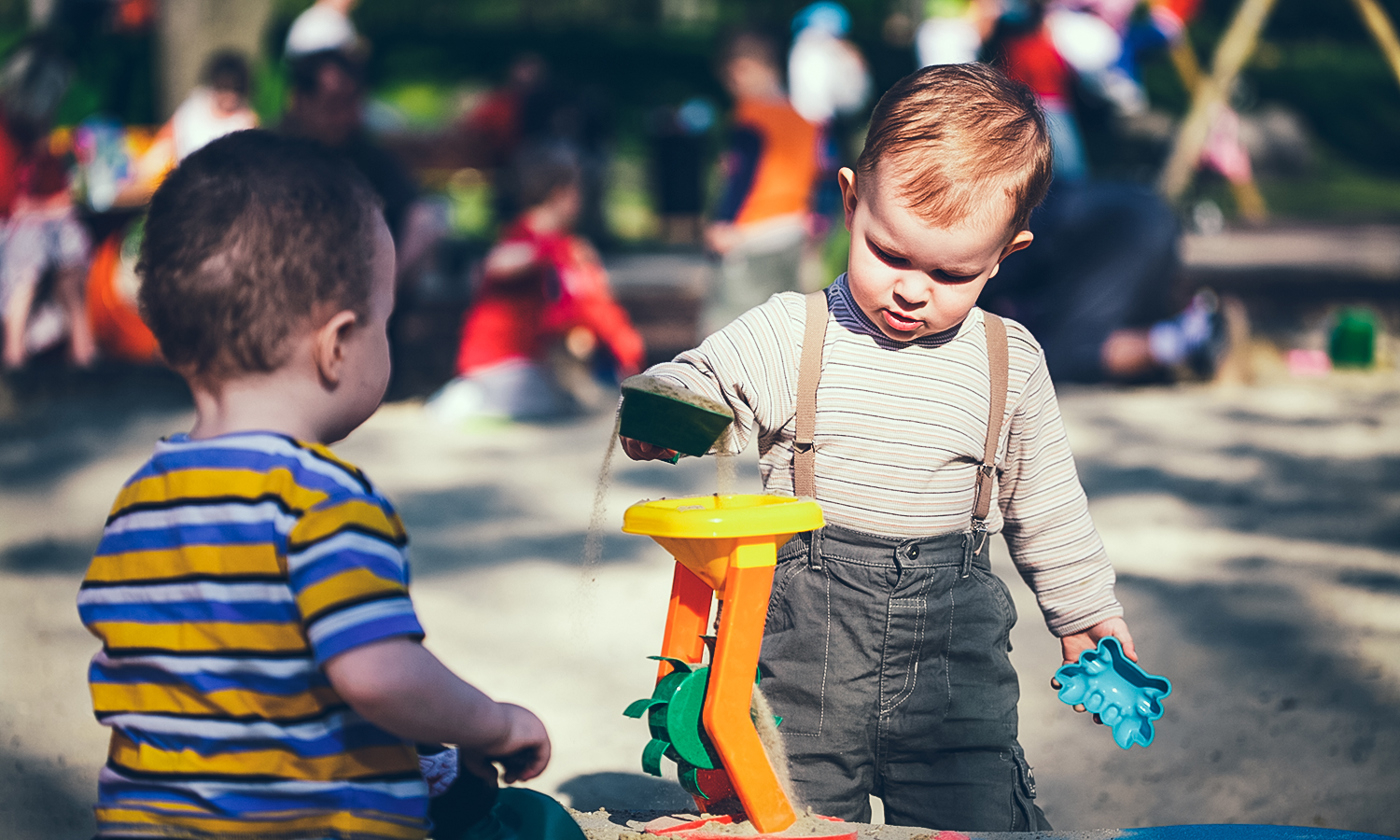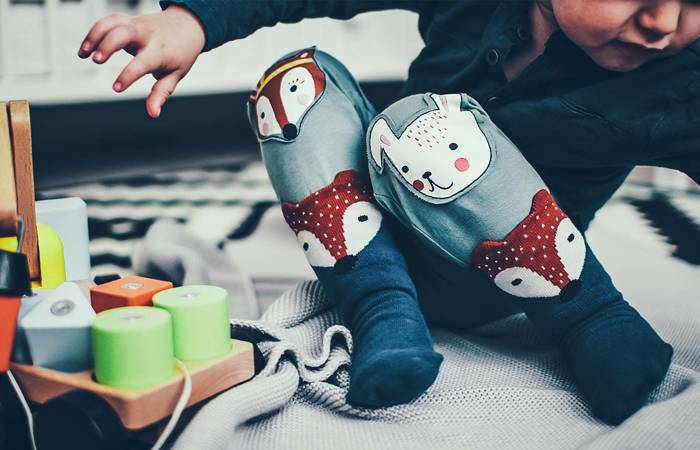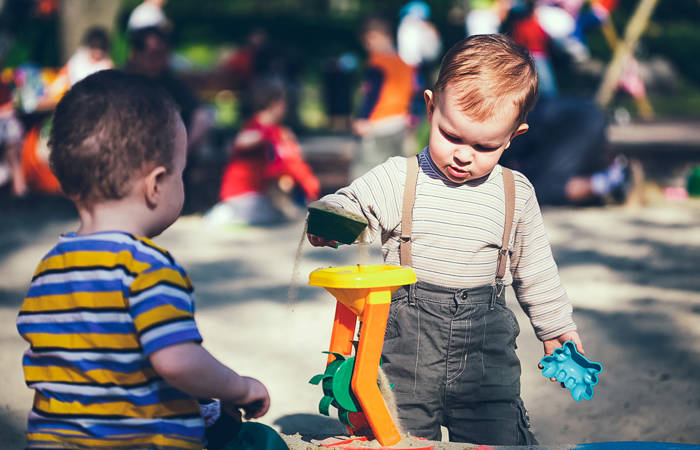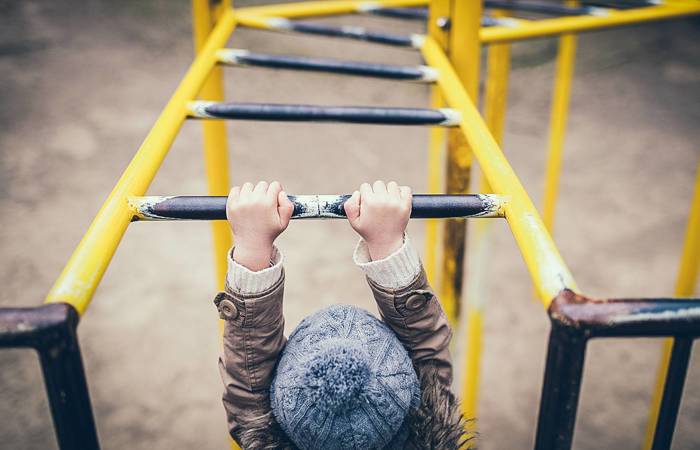Like what you see?
Sign up to receive more free parenting advice.
Thank you for subscribing to our newsletter!
Early Learning

Credit: iStock.com/nyul
For most parents, the message has seeped in. Free play is very good for your child and playing outdoors is better still.
Most parents believe children are playing less than they should and are pressured to grow up too fast.
It would follow, then, that most parents would support more break time at school as something of a solution. That way, children could play more.
Yet according to a study by the Gonski Institute for Education, parents are split on the question 50/50.
It’s a result that Finnish education expert and Professor of Education Policy at the Gonski Institute for Education, Pasi Sahlberg, sees as a strange contradiction.
“The survey indicates 90% or more of parents understand the value of free play but they think schools are not the right place to do it,” says Professor Sahlberg.
“So where and when should kids do it?”
In China, an approach called Anji Play, or ‘true play’, is in the curriculum of 130 public kindergartens in Anji County.
Professor Sahlberg is an advocate. “For the first two hours of each day, children are outdoors doing whatever they want to do.
“It’s becoming an international hit in early childhood education.”
If children are in a sandpit you might think ‘Should I tell them what to do? Or should I just let them play and see what happens?’Professor Pasi Sahlberg
Stay up to date with the latest news and articles from First Five Years
Thank you for subscribing to our newsletter!
Why free play is important
Free or unstructured play is when children choose activities or games that interest them and are not directed by an adult.
Examples at home are playing in the garden, dress ups, making a cubby house, building with Lego, drawing, playing imaginary games or doing puzzles.
Structured play is when an adult is involved, either by playing too or setting rules.
Both have benefits, says Professor Sahlberg.
“If children are in a sandpit you might think ‘Should I tell them what to do? Or should I just let them play and see what happens?’”
In most cases, do the latter. “Let the kids self-organise and see what comes out of it.”
But why?
Professor Sahlberg explains in the description of his 2019 book, co-written with Bill Doyle, called Let The Children Play that “play is how children explore, discover, fail, succeed, socialise and flourish.
“It’s the key to giving school-children skills they need to succeed like creativity, innovation, teamwork, focus, resilience, expressiveness, empathy, concentration and executive function.”
Yet Australia seems to be going in the opposite direction.
When Professor Sahlberg and his family moved to Sydney, he and his wife interviewed several early learning centres for their three-year-old boy.
“They all began by telling us how strong their academic preparation program was.
“I said ‘He’s three! I’m much more concerned about dance and music and learning a new language and to be with other people’.”
The Nordic way
Australia’s focus on academic preparation is similar to England and the United States.
There have been policy discussions about children starting school at four-years-old.
Nordic countries such as Finland, Denmark and Sweden are taking a different approach with children not beginning primary school until the age of seven.
“And even that year is a soft, smooth landing into learning things that are typically taught [in Australia] when children are three,” says Professor Sahlberg.
In an interview on ABC’s Babytalk, he explains Nordic countries view children as citizens with rights.
One of those rights is to safe and high-quality early childhood education and care. And because the power of play is backed by solid evidence, it’s a cornerstone in centres there.
In Finnish kindies (preschool) you’ll see more chaos. More mess, more breaking things and more risky play. You’ll also see children organising themselves more - a skill they sharpen more quickly.
Childhood is recognised as a unique time of life. “We make sure children can be children as long as they feel like it,” says Professor Sahlberg.
The practice pays off with children performing better in comparable international tests later in their schooling.
“People ask ‘how can it be that children start school when they are older, do much less preparation and have less exposure to formal instruction but still do better?’,” he says.
The science of risk
Professor Sahlberg says the “critical years” are between three and six-years-old.
“If children can play and be able to self-regulate and find their own ways, it’s a golden era of their brain and social development.
“It’s the time when they develop the executive functions that seem to strongly predict their future success in school and life in general.”
If they’re put in a school-like situation “they kind of lose this freedom to explore and experiment” he says.
“If they’re guided or instructed to do certain things too early they may miss this important phase of development.”
A recent episode of ABC TV science show, Catalyst, gave further evidence to the theory.
Parents watched on remotely as children experimented with loose parts play.
Loose parts play is when children have free rein among materials that can be moved, combined, lined up and even taken apart or put back together.
Because these materials can be recycled or improvised, it’s something parents, or groups of parents, can do too.
Catalyst host, Lily Serna, explained that our pre-frontal cortex – the neurological braking system that helps us think before we act - doesn’t fully mature until our mid-twenties.
However our risk intelligence is formed when we are very young.
Overly safe playgrounds, helicopter parenting and less time spent outdoors, however, means kids are encountering less risk than ever. Loose parts play is one remedy for this.
Dr Julie Rudner, a senior lecturer in urban planning at La Trobe University told Serna: “We always assume that risk is negative but it’s not. As kids go on in life they’ll be faced with so many challenges.
“If they start at a young age to never know what their boundaries are … before they find out what they’re capable of, they won’t give themselves the opportunity to life the life they want to live.”
Professor Sahlberg wants to keep things simple for parents though. “The message is let your children play outdoors as often as you can.”







